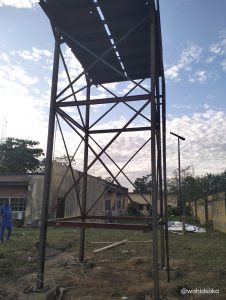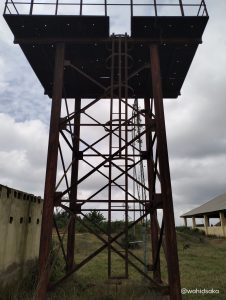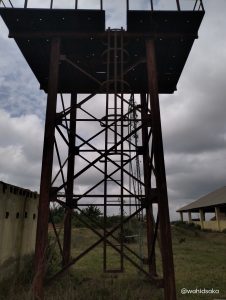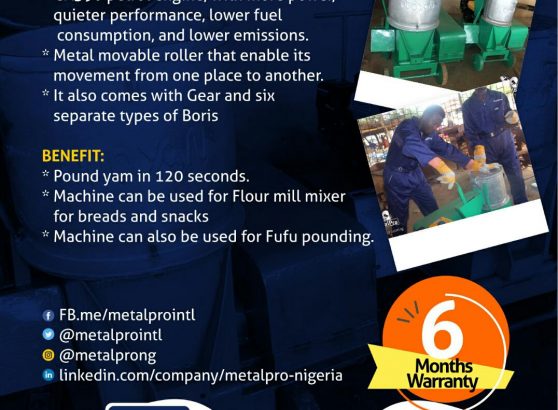
Before You Fabricate That Water Reservoir Stanchion
Water is life, it is an essential component of our existence and its usage which ranges from one user to the other cannot be overlooked. The usage and empirical demand for water varies from one situation to the other and from one circumstance to the other, from domestic to commercial, recreational and industrial usage/demand.
In all these, the functional requirement of the water system must be considered at all times. while bearing in mind the quality of water to be explored, Other component such as storage tank, tank stand and the supply system that would deliver clean water suitable for human consumption and provide a continuous supply of water at a constant pressure, to facilitate the supply of water to every component of the building is fundamental.
Over time, various storage tanks and capacity have been recommended in accordance with demands and suitability with environmental factors. These types and their materials have been carefully chosen to suit the current trends in terms of service delivery, durability, ease of maintenance and aesthetics.

Steel Storage Tanks
Steel tanks are an expensive and versatile alternative to polyethylene or concrete tanks for many applications, including manufacturing facilities, municipal water systems, wastewater systems, concrete plants and the oil industry. They can be used to store either liquids or dry goods, and can be constructed either as welded or bolted, to meet acceptable standards for potable water and food storage systems.
Compared to concrete and polyethylene tanks, they are quick and easy to install, extremely durable, easy to repair and they are even expandable as storage requirements increase. They are constructed in small sections then shipped to the installation site, where they are installed with the appropriate hardware to secure the tank’s contents. It is the most economical to maintain and repair, a part can easily be removed and a new one welded into position without altering the functionality and aesthetics of the tank.
Steel tanks are available in many sizes, from a few thousand gallons to over a million, and can be custom-built to meet the installation requirements at the site, with taller tanks available for narrow spaces and wider tanks available for areas with height restrictions. Because they can be installed quickly, with minimal labor, both installation costs and downtime are minimized.
Steel tanks are perfect for many applications, and here are just a few examples of how they can be used:
1) Potable Water Storage
Depending on the quality and the production capabilities of the well and its equipment, steel storage tanks may be beneficial or even necessary to collect water from the well on a continual basis and store it for future use, acting as a buffer for wells that have lower flow rates. Steel tanks can be used to store and treat drinking water for household use and any other applications that require potable water. These tanks can be assembled from coated carbon steel, galvanized steel or stainless steel, depending on the quality of the water required and the local, state and federal regulations that are applicable. Steel tanks can easily be fabricated to conform to Standard requirements for drinking water storage and are available in a variety of sizes and configurations.
2) Agricultural Water Storage
Steel tanks can also be used for the storage of non-potable water, which can be used to water crops, provide drinking water for livestock, or for manufacturing purposes or cleaning purposes. They can also be used in dry areas to collect rainwater from large roof areas for later use on the farm. For non-potable purposes, there is hardly any regulations, and can be made from more economical materials and finishes. They are available in a variety of sizes and can be customized for particular uses, adding valves, manhole covers and other fittings where appropriate.
3) Wastewater Storage
Given the recent changes in the climate configuration, runoff and wastewater must be controlled to prevent erosion, reduce the formation of muddy spots, prevent pollution or to comply with local ordinances. Steel tanks can store wastewater from field runoff, or rinse water from cleaning or manufacturing processes and even sewage. They can be used to simply store the wastewater until it can be disposed of, or they can be used during a water treatment process to clean the wastewater. For wastewater purposes, steel tanks can be built with galvanized or stainless hardware and rubber-coated hardware to prevent leaks, corrosion and chemical reactions.
4) Grain Storage
Once harvested, silos and other structures are often used to dry and store grain and other food products until they are ready to be sold or used for other purposes, such as planting during the next season. Food-grade steel tanks are often used to store dry goods for human consumption, such as grains like corn, wheat, rice or oats. They can also be used to store foods for processing, such as apples or potatoes, as well as processed goods such as cornmeal or flour. For other purposes, such as storing seeds for future crops or grains for animal feed, standard, non-food-grade steel tanks can be used.
5) Food-Grade Liquid Storage
On dairy farms, orchards or citrus groves, food-grade bolted steel tanks can be used for the storage of liquids like fruit juice or milk prior to transportation or processing. These tanks must be built to standards, and are often made from materials such as stainless steel for hygienic purposes. They can be custom-built to work in indoor or outdoor applications and are available in a variety of sizes to match the production and storage requirements for operations of any size.
Bolted steel tanks are a versatile, long-term storage solution for either liquid or dry goods, and compared to alternatives like concrete or welded steel tanks, they are economical and easy to install. They are perfect for farms and ranches, whether they are small, family-run businesses or large industrial operations, and with the ability to be easily repaired and even expanded in the future, they are a wise investment.
From the water energy calculator, an average home consume 349 litres of water daily while individual use an average of 142 litres a day when cooking, washing, watering the garden and so on are shared across the household; average water per person falls.



What capacity of water tanks do I need ?
For smaller properties and households that don’t have to worry about fire considerations , 2500 – 3000 litres is enough.
What type of water tank stand do I need ?
* Galvanized iron pipe – can not carry more than 3500 – 4000 litres and come out as cheap
* Mild steel H- beam stand – Aesthetics
* mild steel U – Angle Stand- also beautify the house
* Brick wall Tank Stands – Commonly used because of his store area
Whether it is steel storage tank or steel stanchion, MetalPro is a call away.


